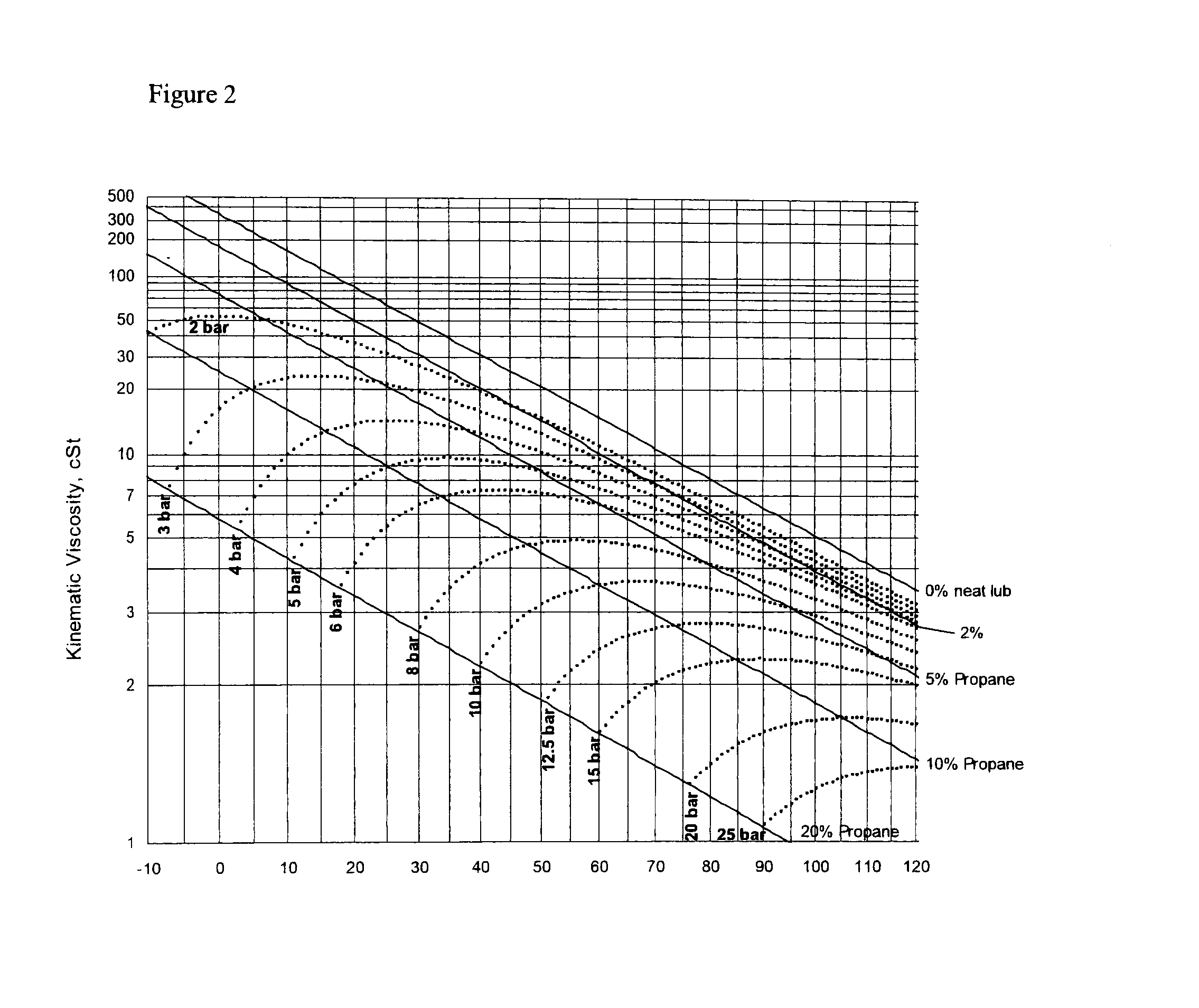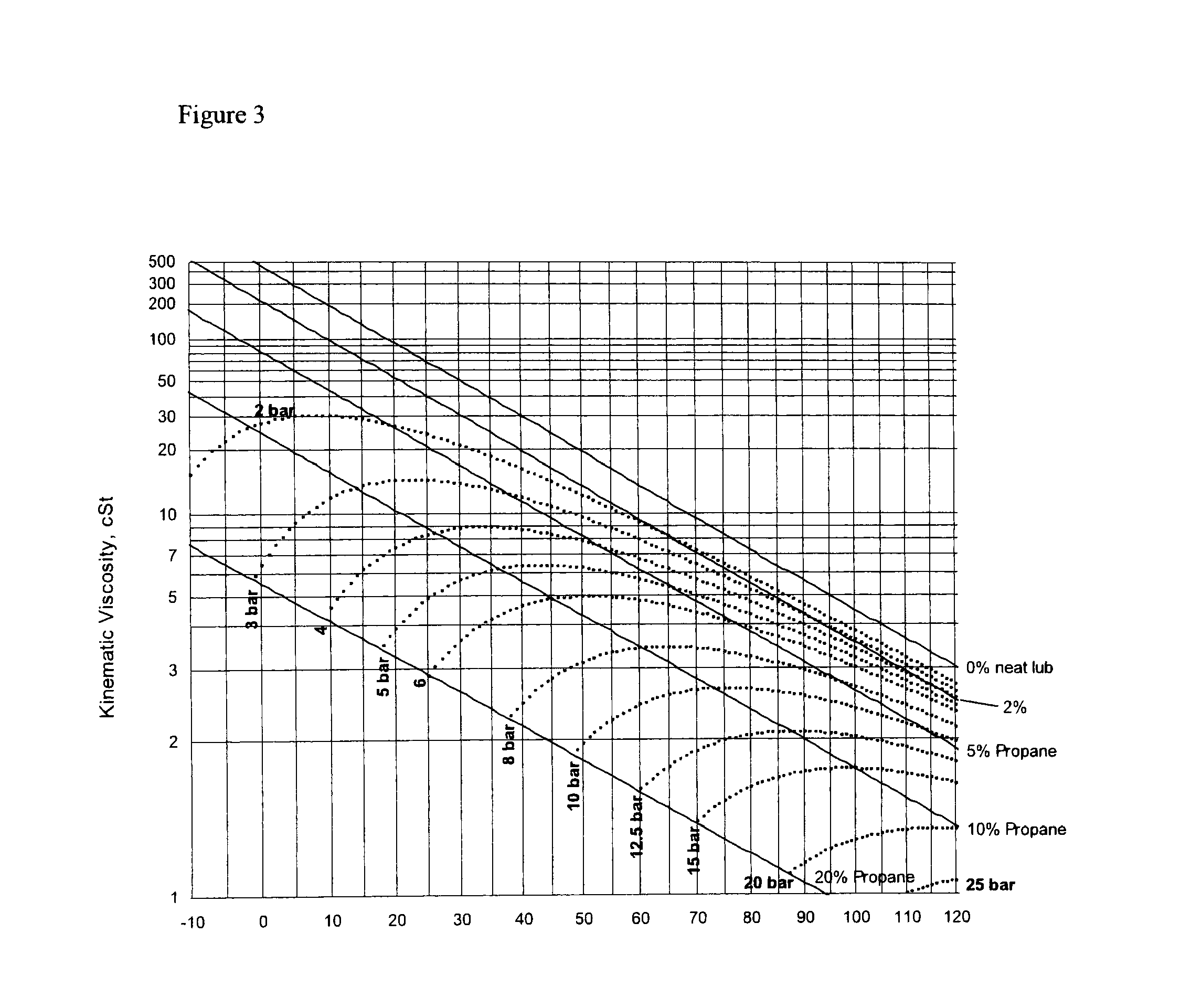Refrigeration Oil and Compositions with Hydrocarbon Refrigerants
a technology of refrigeration oil and hydrocarbon refrigerants, which is applied in the field of working fluids, can solve the problems of stringent demands on lubricant and insufficient lubricity of branched chain esters for use in certain heat transfer devices, and achieve the effect of convenient preparation
- Summary
- Abstract
- Description
- Claims
- Application Information
AI Technical Summary
Benefits of technology
Problems solved by technology
Method used
Image
Examples
example 1
Polypentaerythritol Ester
[0086]To a reactor equipped with a mechanical stirrer, thermocouple, thermoregulator, Dean Stark trap, condenser, nitrogen sparger, and vacuum source was charged 392 grams pentaerythritol (2.88 moles), 720 grams n-heptanoic acid (5.54 moles) and a strong acid catalyst. The initial charge had a mole ratio of carboxyl groups to hydroxyl groups of 1:2.08 and the expected water of esterification from the initial charge was 5.54 moles, or about 100 grams. The mixture was heated to a temperature of about 170° C., vaccuum was applied and water of reaction was collected in the trap and any collected acid was returned to the reactor.
[0087]After 125 ml of water was collected the reaction mixture containing partial esters of pentaerythritol, dipentaerythritol, tripentaerythritol, tetrapentaerythritol, and higher oligomer esters of pentaerythritol was cooled to about 134° C., an additional 236.6 grams (1.82 moles) of n-heptanoic acid was added, along with 264.4 grams (2...
example 2
Trimethylolpropane Ester of Caprylic Acid
[0090]To a reactor equipped with a mechanical stirrer, thermocouple, thermoregulator, Dean Stark trap, condenser, nitrogen sparger, and vacuum source was charged trimethylol propane and an approximately 15 molar % excess of caprylic acid (which is a 6:4 blend of n-octanoic:n-decanoic acids).
[0091]The reaction mixture was heated at 240° C., vaccuum was applied and water of reaction was collected in the trap and any collected acid was returned to the reactor. The reaction was held at 240° C. until the hydroxyl value dropped to below 2.5 mg KOH / gram. The reaction was then held at 240° C. for about 3 additional hours, with vacuum being applied to remove excess acid until the acid value was less than 1.0 mg KOH / g. The mixture was cooled to 80° C. and residual acidity was neutralized with alkali. The kinematic viscosity of the polyester product at 40° C. was 19 cSt and at 100° C. was 4.4 cSt.
example 3
[0092]The esters of Example 1 and Example 2 were blended in a ratio of 2:3 to give a blended polyol ester with a kinematic viscosity at 40° C. of about 32 cSt. The physical properties of the product are given in Table 1.
PUM
| Property | Measurement | Unit |
|---|---|---|
| kinematic viscosity | aaaaa | aaaaa |
| viscosity index | aaaaa | aaaaa |
| pour point | aaaaa | aaaaa |
Abstract
Description
Claims
Application Information
 Login to view more
Login to view more - R&D Engineer
- R&D Manager
- IP Professional
- Industry Leading Data Capabilities
- Powerful AI technology
- Patent DNA Extraction
Browse by: Latest US Patents, China's latest patents, Technical Efficacy Thesaurus, Application Domain, Technology Topic.
© 2024 PatSnap. All rights reserved.Legal|Privacy policy|Modern Slavery Act Transparency Statement|Sitemap



